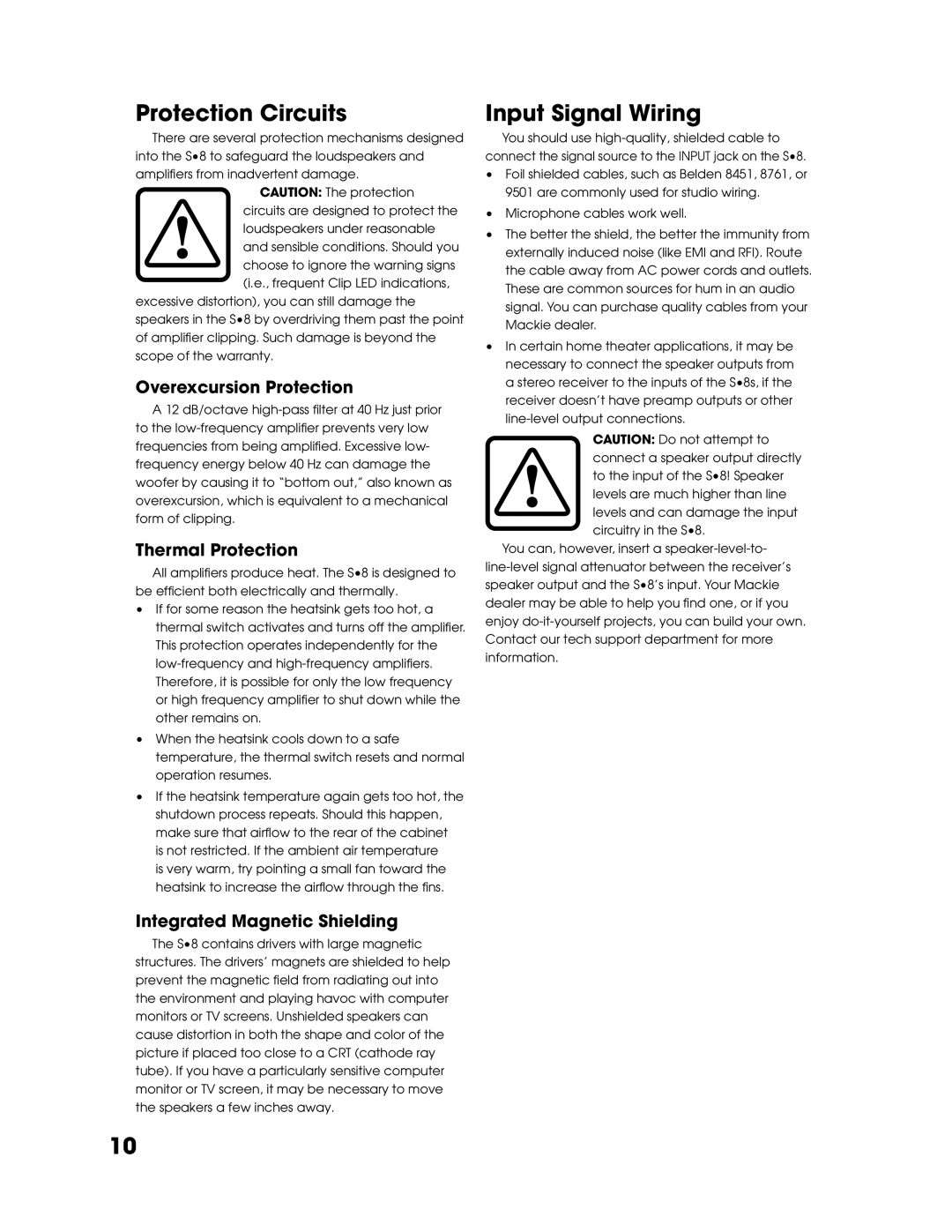
Protection Circuits
There are several protection mechanisms designed into the S•8 to safeguard the loudspeakers and amplifi ers from inadvertent damage.
CAUTION: The protection circuits are designed to protect the loudspeakers under reasonable and sensible conditions. Should you choose to ignore the warning signs (i.e., frequent Clip LED indications,
excessive distortion), you can still damage the speakers in the S•8 by overdriving them past the point of amplifi er clipping. Such damage is beyond the scope of the warranty.
Overexcursion Protection
A 12 dB/octave
Thermal Protection
All amplifi ers produce heat. The S•8 is designed to be effi cient both electrically and thermally.
•If for some reason the heatsink gets too hot, a thermal switch activates and turns off the amplifi er. This protection operates independently for the
•When the heatsink cools down to a safe temperature, the thermal switch resets and normal operation resumes.
•If the heatsink temperature again gets too hot, the shutdown process repeats. Should this happen, make sure that airfl ow to the rear of the cabinet is not restricted. If the ambient air temperature
is very warm, try pointing a small fan toward the heatsink to increase the airfl ow through the fi ns.
Integrated Magnetic Shielding
The S•8 contains drivers with large magnetic structures. The drivers’ magnets are shielded to help prevent the magnetic fi eld from radiating out into the environment and playing havoc with computer monitors or TV screens. Unshielded speakers can cause distortion in both the shape and color of the picture if placed too close to a CRT (cathode ray tube). If you have a particularly sensitive computer monitor or TV screen, it may be necessary to move the speakers a few inches away.
Input Signal Wiring
You should use
•Foil shielded cables, such as Belden 8451, 8761, or 9501 are commonly used for studio wiring.
•Microphone cables work well.
•The better the shield, the better the immunity from externally induced noise (like EMI and RFI). Route the cable away from AC power cords and outlets. These are common sources for hum in an audio signal. You can purchase quality cables from your Mackie dealer.
•In certain home theater applications, it may be necessary to connect the speaker outputs from a stereo receiver to the inputs of the S•8s, if the receiver doesn’t have preamp outputs or other
CAUTION: Do not attempt to connect a speaker output directly to the input of the S•8! Speaker levels are much higher than line levels and can damage the input circuitry in the S•8.
You can, however, insert a
10
